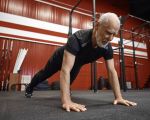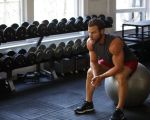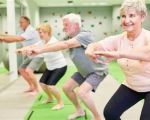- 1-Why-Building-Endurance-Matters
- 2-Cardiovascular-Workouts-for-Endurance
- 3-Strength-Training-to-Support-Endurance
- 4-High-Intensity-Interval-Training-HIIT
- 5-Recovery-and-Nutrition-for-Endurance
- 6-Real-Life-Success-Story
- 7-Tips-for-Consistent-Endurance-Improvement
1. Why Building Endurance Matters for Overall Fitness
Endurance is a fundamental component of physical fitness that enables you to sustain prolonged physical activity without excessive fatigue. Building endurance improves heart health, boosts energy levels, and enhances performance in sports and daily activities.
For many gym-goers, increasing stamina means better workout capacity and improved recovery. Endurance training also supports weight management and mental toughness, making it a vital part of a balanced fitness routine.
Understanding why endurance matters helps motivate consistent training and realistic goal setting.
2. Cardiovascular Workouts for Building Endurance
Cardio exercises form the backbone of endurance training. Activities like running on the treadmill, cycling, rowing, and using the elliptical machine increase your heart rate and strengthen the cardiovascular system.
Begin with steady-state cardio sessions lasting 20-30 minutes at moderate intensity. Gradually increase duration and intensity as your fitness improves. Incorporating varied cardio workouts prevents boredom and targets different muscle groups.
Tracking heart rate zones during cardio can optimize training by ensuring you work within the right intensity to build aerobic capacity.
3. Strength Training to Support Endurance Goals
While cardio is essential, strength training complements endurance by building muscle resilience and improving overall body efficiency. Exercises like squats, lunges, deadlifts, and push-ups engage multiple muscle groups and enhance muscular endurance.
Incorporate circuit training or perform higher repetitions with lighter weights to focus on endurance rather than maximal strength. This approach builds muscular stamina, helping you perform longer during cardio sessions and physical tasks.
Strength work also protects joints and reduces injury risk, which is crucial for sustained training.
4. High-Intensity Interval Training (HIIT) for Endurance and Fat Loss
HIIT combines short bursts of intense exercise with recovery periods, boosting both aerobic and anaerobic endurance. This method increases calorie burn and improves cardiovascular fitness efficiently.
A typical HIIT workout might include 30 seconds of sprinting followed by 1-2 minutes of walking, repeated 6-10 times. HIIT workouts can be adapted for all fitness levels and performed on treadmills, bikes, or bodyweight exercises.
Integrating HIIT into your routine enhances endurance faster than steady-state cardio alone but requires proper recovery.
5. Recovery and Nutrition: Fueling Your Endurance Progress
Recovery plays a vital role in endurance building by allowing muscles to repair and energy stores to replenish. Prioritize sleep, hydration, and rest days to avoid overtraining.
Nutrition supports endurance training by providing carbohydrates for energy, protein for muscle repair, and fats for sustained fuel. Timing meals around workouts can maximize performance and recovery.
Supplements like electrolytes and BCAAs may benefit some athletes, but a balanced diet remains foundational.
6. Real-Life Success Story: Transforming Endurance Through Gym Workouts
Jake, a recreational cyclist, struggled with fatigue on longer rides. After adopting a gym workout plan focusing on cardio, strength circuits, and HIIT, he gradually increased his stamina.
Within months, Jake noticed improved performance and less fatigue, enabling him to tackle more challenging routes. His experience underscores how structured gym workouts can transform endurance for everyday athletes.
7. Tips for Consistent Improvement in Endurance
To continually build endurance, set progressive goals, vary workouts, and track your progress. Listen to your body and adjust intensity to prevent burnout. Joining group classes or working with a trainer can add motivation and accountability.
For expert guidance and the best fitness gear, Fitness offers curated products and professional advice to support your endurance journey effectively.








